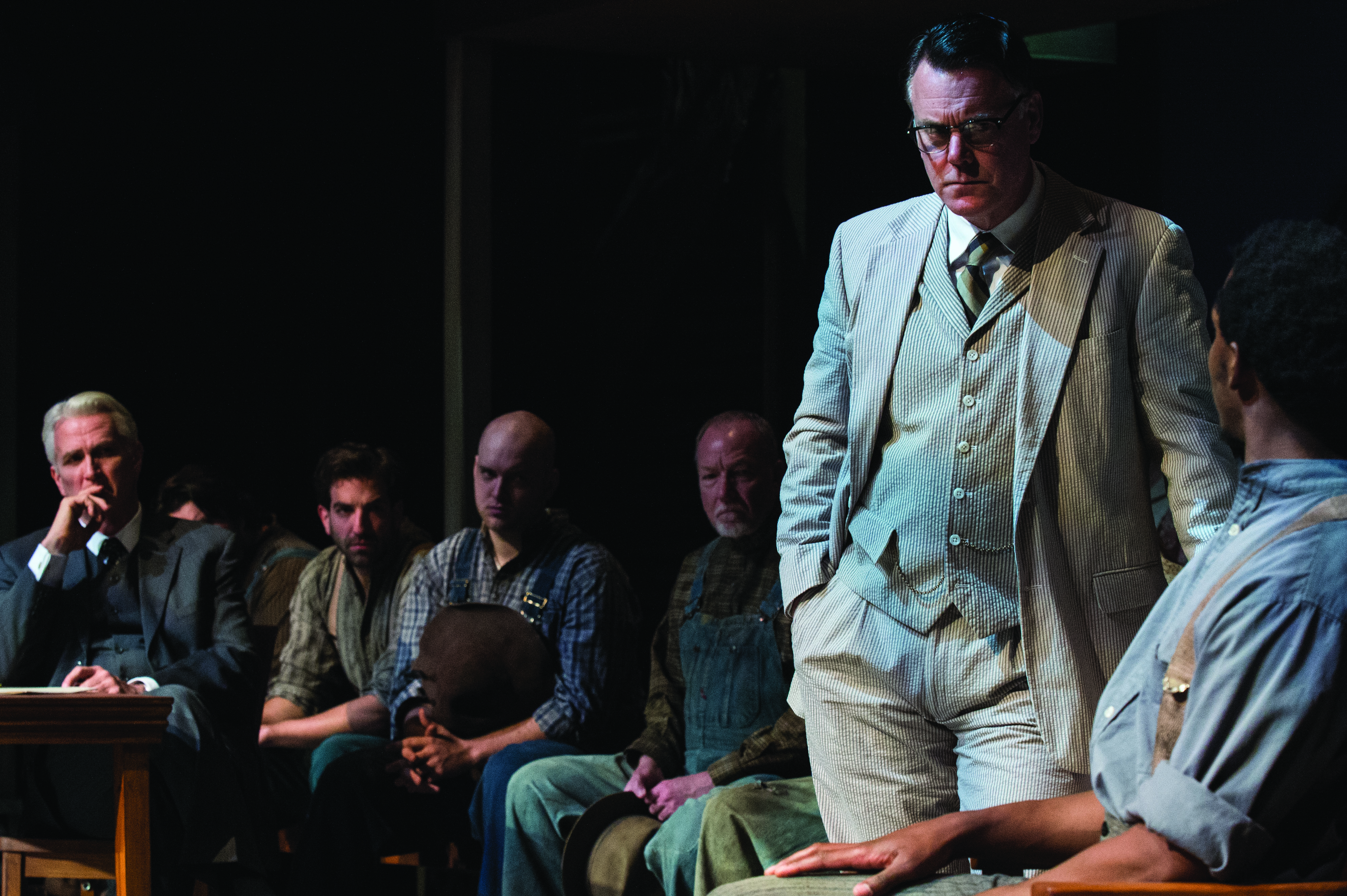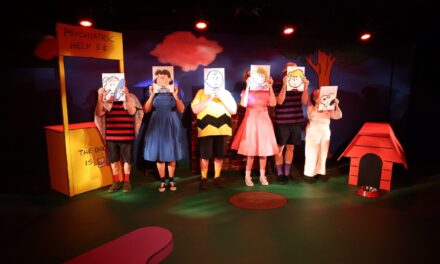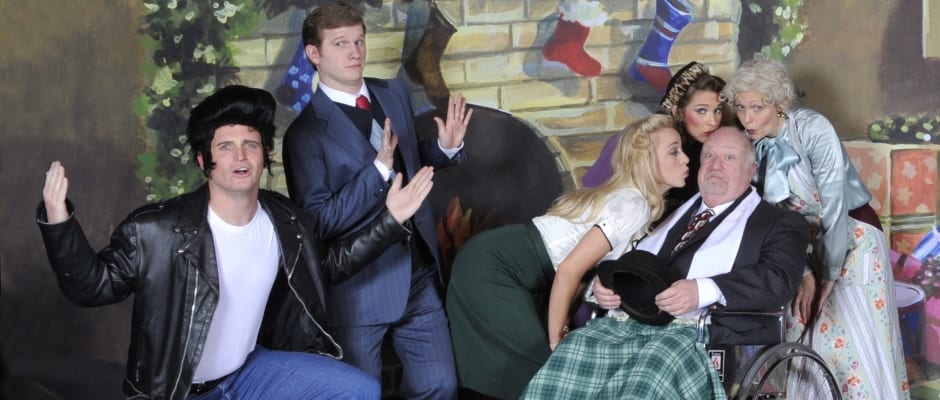CEDAR CITY — So many of us have memories of Harper Lee’s Pulitzer prize-winning novel, To Kill a Mockingbird. It might be one of your favorites, or maybe you struggled through it in high school like I did. But it’s funny how resonant To Kill a Mockingbird is to this day. I didn’t fully appreciated it back in high school, and—to be honest—I hadn’t given the story a second thought until I sat in the Randall L. Jones theater at the Utah Shakespeare Festival and saw it given new life.

Martin Kildare (left) as Atticus Finch and Jinger Axelson as Scout in the Utah Shakespeare Festival’s 2012 production of To Kill a Mockingbird. (Photo by Karl Hugh. Copyright Utah Shakespeare Festival 2012.) Show closes September 1, 2012.
The story says so much about humanity, showing both the highest nobility and the lowest ignorance of which man is capable. For those who need a refresher from high school English, To Kill a Mockingbird chronicles a brief period in 1935 in fictional Maycomb, Alabama, through the eyes of 10-year old Jean Louise “Scout” Finch. Her lawyer father, Atticus Finch, agrees to defend a young black man named Tom Robinson accused by two white members of the town of raping a white woman. The Finch family finds themselves persecuted when Atticus, rather than throw the case in favor of the white accusers, works his hardest to prove Robinson’s innocence.
As for specifics associated with this production: I loved every bit. Gritty poverty and pure-hearted earnestness were reflected so clearly in David Kay Mickelsen‘s costuming and in each actor’s demeanor. The Ewells were clothed in old, greasy clothing colored by filth and dust. Tom Robinson, on the other hand, wore simple but clean clothes, reflecting his character as an honest, charitable person. Jo Winiarski‘s scenic design complemented the story and the characters perfectly, and worked hand in hand with Jaymi Lee Smith‘s lighting design to bring life and focus to the powerful tale. I loved the wooden slats that found their way into most every aspect of the set; they kept the small-town feel consistent. Between the design and Edward Morgan’s direction, it was never a question where my attention should be. I knew which character to look at or which part of the stage; the production team made sure the audience saw what we needed to see—nothing more, nothing less.
Martin Kildare and Monica Bell played focused, controlled Finches as Atticus and an older Jean Louise, respectively. I loved how Atticus—just as he was in the eyes of the children—began rather unassuming and typical, but gradually revealed the powerhouse of integrity and articulation that he was. This gradual transformation happened while the story was gracefully narrated by Bell. Like a true gentleman, Atticus kept his seersucker suit spotless and emotions in check, although the number of times the smart lawyer was surprised to find young eavesdroppers was a little hard to believe.
Speaking of eavesdroppers, the play featured three kids in lead roles: Jem played by Nick Denhalter, Scout played by Jinger Axelson, and Dill played by Bailey W. Duncan. Their choices weren’t as complex or developed as their adult costars, but nonetheless I was extremely pleased with their performances, especially Duncan’s. His was the most earnest of the three, creating a boy of pure innocence and curiosity. Plus he was adorable. My heart melted when he furiously rang the alarm bell while playing “lookout” for Jem’s mischief.

A scene from the Utah Shakespeare Festival’s 2012 production of To Kill a Mockingbird. (Photo by Karl Hugh. Copyright Utah Shakespeare Festival 2012.)
The second act’s trial scene was where the cast’s talents shone. I felt sincere compassion for Colby Lewis as the accused Tom Robinson when he testified on the courtroom stand. Lewis had only a few minutes to convince the jury (and the audience) of his innocence, and did so with sincere nuance. Max Robinson as Bob Ewell transformed into the play’s villain during this trial, and terrifyingly so. As seconds went by and new details came to light, there was a constant fear that he might suddenly hurt Mayella or lash out at Atticus. I loved the contrast Atticus’s careful articulation and refined stance had with Mayella’s (played by Meaghan Sullivan) greasy hair and defeated posture. Theirs was an interesting interaction, with my sympathy switching back and forth between the two at just about every other line.
Of all the actors in the trial scene, though, Kildare was a standout. He had me on the edge of my seat during his trial scene closing statement. He spoke to the audience–playing the role of the jury–and his accusations were piercing. The power in his voice attested to the profound truth of his words. I had goosebumps.
If you loved Harper Lee’s novel, see this show. Even more to any who didn’t love the novel or are unfamiliar with it altogether, see the Utah Shakespeare Festival’s show; the play will change your mind. You will come away with a new appreciation for the progress humanity has made, empathy for those who suffered for that progress, and a great love for Harper Lee’s classic characters: Jem, Atticus, Dill, Tom, Boo, and Scout.





